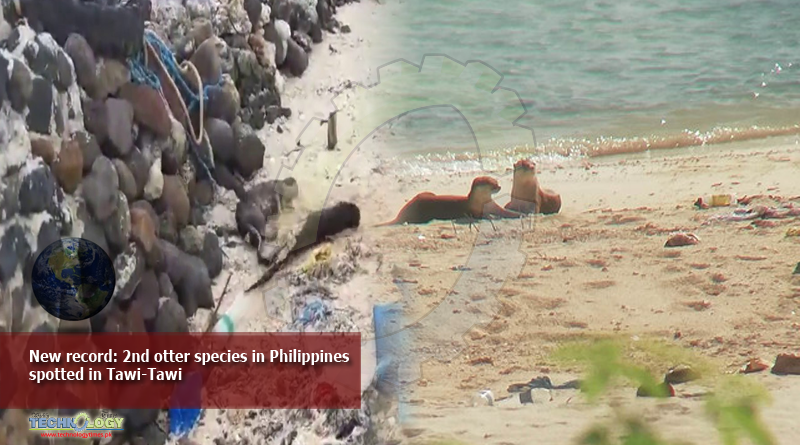Manila, philippines as the economic hubs of the country continue to grapple with the coronavirus, remote turtle islands in tawi-tawi got some unexpected visitors: 6 otters of a species never before seen in the philippines.

At least two romps, each composed of two adults and one pup, were spotted by locals in taganak island in the 3rd week of may.
The otters were initially thought to be asian small-clawed otters (aonyx cinereus), a species which can be found in palawan.
But otter expert lyca sandrea castro ruled this out when she saw photos and videos. Because asian small-clawed otters are the only otter species recorded in the philippines, this recent sighting means a second species for the country.
Castro had been asked by rizza salinas, a veterinarian of the department of environment and natural resources’ biodiversity management bureau (denr-bmb) to identify the otter species through videos and photos sent on friday, may 29.
“when she sent the video and i saw the otter, i got even more excited because it’s really different, meaning it’s another record for otters in the philippines,” castro told rappler on saturday, may 30.
Castro, the country’s first international union for conservation of nature (iucn) otter specialist, said the otters are more likely smooth-coated otters (lutrogale perspicillata).
Other otter specialists she conferred with agreed with her assessment.
If this is true, this is the first ever recording of smooth-coated otters in the philippines.
The otters seen in tawi-tawi looked bigger than asian small-clawed otters and had longer tails. However, they could also be any of the two other otter species similar to the smooth-coated otter, the eurasian otter and hairy-nosed otter.
However, castro and other otter specialists still need clearer documentation of the otters to confirm their species.
Cute visitors amuse tawi-tawi locals
Conservationist kester yu sent rappler photos and videos of the otters, taken by local police.
The otters likely came from nearby sabah where 4 different species of otters have been found.
“they may have gotten there (turtle islands) accidentally but it’s definitely a natural occurrence. Other than torrential rains the night before, we still do not know the complete circumstances [of] how or why they traveled to turtle islands,” said yu, who is also president of the turtle conservation society of the philippines.
“perhaps because of the recent reduction of sea traffic, it may have been more favorable to them to travel longer distances,” yu added.
The otters have been spotted playing in the sand, amusing locals who say this is the first time they’ve seen them in the municipality.
The new furry visitors would rush back in the water at the sight of the town’s dogs.
Ironically, otters themselves are referred to as “sea dogs” or “anjing laut” in sandakan in sabah.
It remains to be seen if the otters will make a home out of turtle islands. But so far, despite the presence of people in taganak island, they seem to be “making themselves comfortable,” said yu.
So far, the otters don’t appear to be harming the group of islands’ most famous animals – the marine turtles. The turtle islands is a major nesting ground for green sea turtles and hawksbill turtles, leading the philippines and malaysia to declare it a transboundary protected area. (read: looking back: the turtle islands heritage protected area)
The turtle island police vowed to help protect the otters. They quickly coordinated with national biodiversity experts after first spotting the animals.
“since we are on lockdown, we are including in our routine information dissemination that hurting or catching these otters is prohibited because they are under police protection,” said acting local police chief police major alpaser haber.
Many types of otters are classified as “vulnerable” by the iucn, like the smooth-coated otter. Their populations are decreasing due to destruction of habitat brought about by pollution and encroachment.
This means the people of turtle islands and the country’s conservationists now have a responsibility to protect the new creatures that have found their way to their home
This news was originally posted on rappler.com
